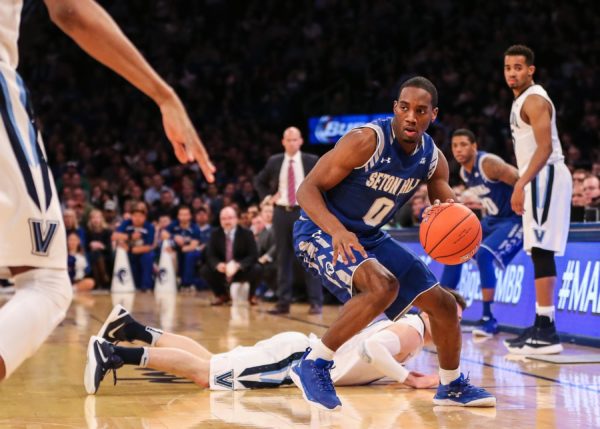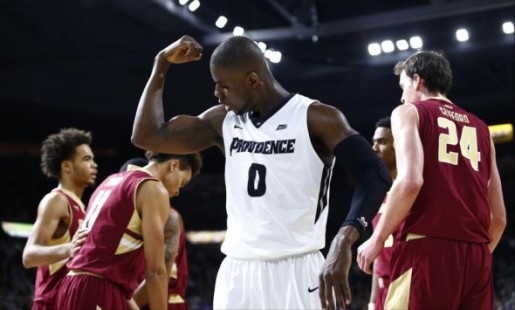Are Villanova’s Smallest Lineups Its Most Effective?
Posted by Justin Kundrat on January 11th, 2017Much has already been written about Omari Spellman’s ineligibility ruling at the beginning of the season, leaving Villanova light in the frontcourt with 6’9″ center Darryl Reynolds acting as the lone interior player. The prevailing concern at the time was that Jay Wright‘s team would struggle to both defend in the post and get abused on the glass, but that line of thinking has proven incorrect. Instead, Villanova’s offense has flourished, and the key to unlocking its full potential might just be re-calibrating the lineup to completely embrace small-ball. For all the discussion over the Wildcats’ elite offense last season, it’s hard to believe that this year’s team is almost two points per 100 possessions better. If Villanova finishes the season at this level of offensive efficiency, its 1.232 points per possession would rank as the fourth-highest of any college basketball team in the last five years. More remarkably, though, is what happens Wright removes Reynolds from the lineup. Take a close look a the table below.

The table shows a Wildcats’ lineup that includes Jalen Brunson, Josh Hart, Kris Jenkins, Eric Paschall and either of Donte DiVicenzo or Mikal Bridges — in other words, a lineup that features no player taller than the 6’7″ Paschall, who was a wing at Fordham and has deftly assumed the role of an undersized center at Villanova. In this even smaller-ball lineup, offensive efficiency spikes further (1.28 PPP) and, given that all five players are comfortable handling the ball, turnovers correspondingly drop (-4.3%). Paschall is a better passer and more viable scoring threat than Reynolds (averaging 15.9 PPG at Fordham) with a demonstrated ability to hit perimeter shots. Moreover, he is dangerous in pick-and-roll situations and Wright can also choose to park him on the three-point line if he wants to open up the lane.













































